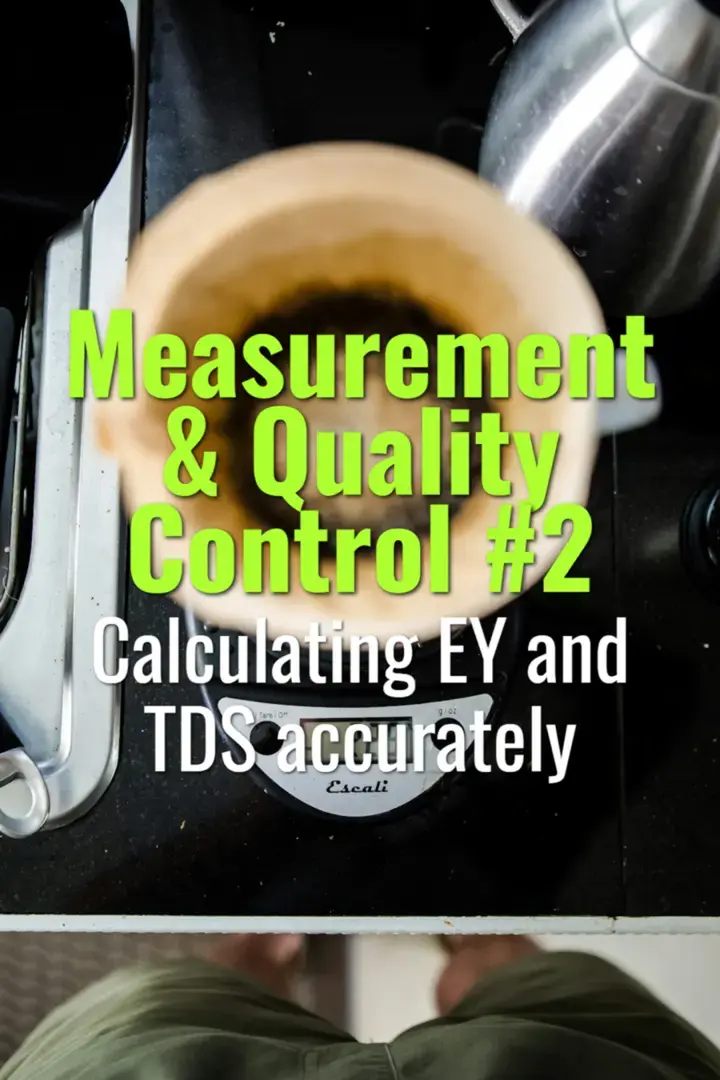Calculating EY and TDS accurately
How to correctly calculate extraction yield (EY) and beverage strength (TDS) for precise quality control in coffee brewing.
- Coffee Basics Nerds
- 1 min read
Article 2 of 12 in Measurement & Quality Control/

Key Definitions
-
TDS (Total Dissolved Solids):
-
The percentage of soluble coffee compounds in the final beverage.
-
Measured with a refractometer (e.g., 1.35% for filter, 9% for espresso).
-
Extraction Yield (EY):
-
The percentage of solubles extracted from the coffee dose into the beverage.
-
Indicates how much of the coffee mass was dissolved.
Calculation Formula
- EY (%) = (TDS × Beverage Mass) / Dose × 100
- Example (Filter Coffee): 20 g coffee, 320 g beverage, 1.35% TDS.
- EY = (0.0135 × 320) / 20 × 100 ≈ 21.6%
- Example (Espresso): 18 g coffee, 36 g yield, 9% TDS.
- EY = (0.09 × 36) / 18 × 100 ≈ 18%
Accuracy Considerations
- Always filter samples (paper or syringe filter) to remove oils/fines.
- Weigh beverage yield precisely with a scale, not by cup volume.
- Ensure refractometer calibration with distilled water before use.
- Take multiple readings and average them.
- Account for evaporation when measuring hot coffee (cool samples first).
Practical Target Ranges
- Filter coffee: 1.15–1.55% TDS, 18–22% EY.
- Espresso: 8–12% TDS, 18–22% EY.
Summary
Accurate EY and TDS calculations provide an objective framework for evaluating brews. When paired with sensory evaluation, they enable consistent recipe development and quality assurance across batches.